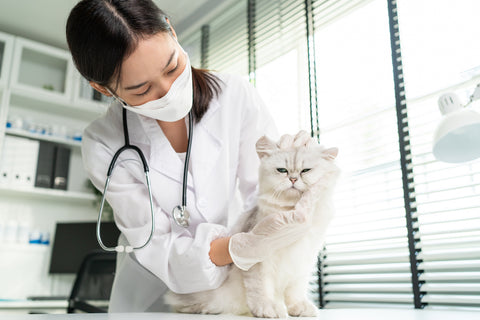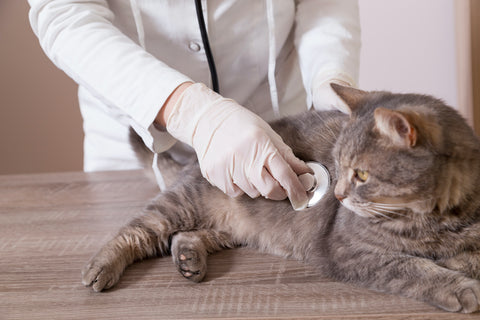Can Cats Get Strep Throat? Understanding Feline Health
As pet owners, we often worry about the health and well-being of our beloved feline friends. One common question that may arise is whether cats can get strep throat, a condition well-known in humans.
In this article, we will explore the possibility of cats contracting strep throat, its symptoms, and what you can do to keep your furry companion healthy.
Strep Throat in Cats: Myth or Reality?
Strep Throat in Humans
Strep throat, short for streptococcal pharyngitis, is a bacterial infection caused by Group A Streptococcus bacteria. It primarily affects humans and is characterized by a sore throat, difficulty swallowing, fever, and swollen lymph nodes. Strep throat can be highly contagious and is typically treated with antibiotics to prevent complications.
Can Cats Get Strep Throat?
The good news for cat owners is that strep throat is extremely rare in felines. Cats have their own set of potential health issues, but this particular bacterial infection is not one of them. The Streptococcus bacteria responsible for strep throat in humans typically do not affect cats in the same way.
Cat Upper Respiratory Infections: Causes and Risk Factors
While cats may not get strep throat, they are susceptible to various other respiratory infections, some of which may share similar symptoms with strep throat in humans. Feline upper respiratory infections are relatively common and can be caused by several viruses and bacteria, including:Feline Herpesvirus (FHV-1): This virus can cause sneezing, nasal discharge, and eye symptoms in cats.
Feline Calicivirus (FCV): FCV can lead to symptoms such as sneezing, nasal discharge, and oral ulcers in cats.
Chlamydophila felis: This bacterium can cause conjunctivitis and upper respiratory symptoms in cats.
Bacterial Infections: Besides Chlamydophila felis, other bacteria like Bordetella bronchiseptica can contribute to upper respiratory infections in cats.
Stress: Stress weakens a cat's immune system, making them more susceptible to infections. Changes in environment, the introduction of new pets, or illness can all be stressors for cats.
Symptoms of Cat Upper Respiratory Infections
The symptoms of feline upper respiratory infections can include:
Sneezing
Nasal discharge
Coughing
Watery or crusty eyes
Fever
Decreased appetite
Lethargy
Preventing Cat Upper Respiratory Infections
Vaccination: Ensure your cat is up-to-date with their vaccinations, especially against FHV-1 and FCV. Discuss the appropriate vaccination schedule with your veterinarian.
Quarantine New Cats: If you're introducing a new cat to your household, it's wise to quarantine them for a period to prevent potential transmission of infections to resident cats.
Good Hygiene: Regularly clean and disinfect your cat's living environment, including litter boxes and food dishes, to minimize the spread of pathogens.
Treating Cat Upper Respiratory Infections
Veterinary Consultation: If you suspect your cat has an upper respiratory infection, consult your veterinarian promptly. Early intervention can help prevent complications.
Medications: Depending on the severity and cause of the infection, your vet may prescribe antibiotics, antiviral drugs, or other medications to manage symptoms.
Supportive Care: Make sure your cat stays well-hydrated and well-fed. You may need to offer special diets or encourage eating if your cat's appetite is affected.
Isolation: If you have multiple cats, consider isolating the infected cat to prevent the spread of the infection to others.
When to Seek Urgent Care
While most upper respiratory infections in cats are mild and self-limiting, there are situations where immediate veterinary attention is required:
Severe breathing difficulties: If your cat is struggling to breathe, this is an emergency, and you should seek veterinary care immediately.
Dehydration: If your cat becomes dehydrated due to a lack of water intake, this can be life-threatening. Signs of dehydration include dry, tacky gums, lethargy, and sunken eyes.
Persistent High Fever: A persistent high fever (over 104°F or 40°C) despite treatment may warrant an urgent vet visit.
Home Care for a Cat with an Upper Respiratory Infection
Isolation: If you have multiple cats, isolate the infected cat to prevent the spread of the infection. Use separate food and water dishes, and ensure proper hygiene when caring for both the sick and healthy cats.
Humidity: Increasing the humidity in your home can help relieve your cat's congestion and make breathing easier. You can use a humidifier or place a bowl of water near a heat source.
Steam Therapy: Create a steamy environment in your bathroom by running a hot shower with the door closed. Allow your cat to spend some time in the bathroom to inhale the moist air, which can help clear congestion.
Nutrition: Encourage your cat to eat and drink. Offer soft, palatable foods to entice them to eat. If your cat is not drinking enough, consider using a syringe or dropper to provide water.
Comfort: Provide a quiet and comfortable space for your cat to rest. Make sure they have a cozy bed or blanket to snuggle in.

Monitoring Your Cat's Recovery
Temperature: Monitor your cat's temperature regularly. If it remains elevated despite treatment or if it spikes significantly, contact your vet.
Symptom Improvement: Keep an eye on your cat's symptoms. While some improvement should be noticeable within a few days of treatment, complete recovery may take several weeks.
Medication: Administer any prescribed medications as directed by your veterinarian, even if your cat's symptoms start to improve. Finishing the full course of antibiotics is crucial to preventing a relapse.
When to Follow Up with the Vet
It's important to maintain communication with your veterinarian throughout your cat's illness. They can provide guidance on whether additional appointments or treatments are necessary. You should also reach out to your vet if you observe any of the following:
Worsening Symptoms: If your cat's symptoms worsen or become severe, such as increased lethargy, difficulty breathing, or severe nasal discharge, seek immediate veterinary attention.
Recurring Infections: If your cat experiences recurrent upper respiratory infections, your vet may want to investigate underlying causes or immune system issues.
Complications: Complications like eye infections or pneumonia can occur with upper respiratory infections. Prompt diagnosis and treatment are essential to prevent these complications.
In conclusion, while upper respiratory infections in cats can be uncomfortable for both you and your furry friend, most cases can be managed with proper care and veterinary guidance. Providing a clean and comfortable environment, monitoring your cat's progress, and seeking veterinary care when necessary will help ensure a swift recovery.
Leave a comment
